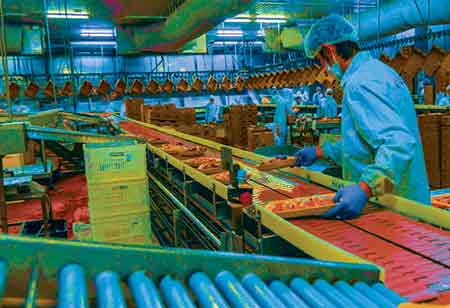Thank you for Subscribing to Food Business Review Weekly Brief
- Home
- Topics
- Alternative Proteins and Plant Based Food
- Beer and Wine
- Canned Beverages
- Coffee And Tea
- Food and Beverage Consulting
- Food and Beverage Financial Service
- Food And Beverages Marketing
- Food Distributors
- Food Ingredients
- Food Sustainability
- Plant Based Food and Beverages
- Seafood Suppliers
- Supplement Manufacturing
- Wine Investment
- News
- Vendor Viewpoint
- CXO Insights
- Conferences
- Newsletter
- CXO Awards
-
Importance Of Voice Technology In The Food And Beverages Industry.
Technology has turned the new pet word into the context of food.

By
Food Business Review | Monday, February 28, 2022
Stay ahead of the industry with exclusive feature stories on the top companies, expert insights and the latest news delivered straight to your inbox. Subscribe today.

Voice activation, the highest addition to the customer preferences, makes the food and beverages industry more innovative, efficient, and futuristic.
Technology has turned the new pet word into the context of food. Over the years, technological improvements have changed how food is produced through applications, robotics, data, nanotechnology, and other processing techniques. Reports show that technology supports food manufacturers in making it more effective for the growing population.
Aside from the demand for food, the food and beverage sector has razor-thin margins and complications involved, and there is no room for errors, delays, and shorts when consumers are most concerned. Production and distribution operations must deliver outstanding service levels for customers, despite any conditions.
The industry is continually evolving, especially in customer demand, warehousing, and technology. As development is so frequent, it is becoming harder to manage operations and keep track of the changes. To tackle this challenge, forward-thinking food and beverage firms leverage voice intelligence in their supply chain operations to make them more agile.
The application of voice technology in the industry is on the rising. Purchases made using voice activation devices are projected to enhance, with groceries accounting for the most significant portion. It can never surprise that voice activation impacts food supply chain logistics and how warehouses operate. Using voice technology can reduce costs and raise productivity for the companies.
Since supply chain operations use voice technology widely for voice picking, warehouse operators can work hands-free and eyes-free because the operator is receiving voice commands from the warehouse management system. As a result, it can increase productivity and accuracy while reducing training time and employee revenue. In voice picking warehouse operator is guided to a specific location, and after picking the food item by reading the code on them. Then the warehouse management system verifies if the preferred thing is correct. This process is more effective when compared to the traditional paper picking system, where operations are done manually to monitor food orders and inventory. In addition, the hand's clear nature of voice activation is expanding throughput. Therefore, implementing voice picking can tremendously benefit the operational efficiency of food and beverages companies.
Voice technology has developed to transform warehouse operating efficiencies in areas other than product picking. Voice recognition software manages the selection, put-to-store, transfers, line loading, back stocking, and inventory control. This eliminates the need for a stand along with an inventory audit function. The fusion of barcode and voice is one of the recent technological advancements used in the food and beverages industry. Now, customers can scan their food items through voice applications. In addition, developments are taking place in the speaker-independent speech recognition engine that allows recognizing people's voices without voice training. This can considerably reduce training time and ensures that voice users are pleased with the service provided. The combination of voice and scanning also plays an essential role in improving product traceability. Food manufacturers can enhance supply chain efficiency with voice and scan verification. This is becoming vital as the food and modernization act demands new urgency to scanning and picking technologies. Fulfilling this need, voice technology provides food manufacturers with a record to track and trace orders.
As demand and pressure rise in the food and beverages industry, innovations in technology provide opportunities to decrease the burdensome cost and inefficiencies. The sector is harnessing voice technology to focus internally on improving supply chain operations, prices, and efficiencies. As mentioned in detail above, there are many benefits to using voice technology in the food and beverages industry. Therefore, voice technology is the future of the food manufacturing industry, and those who jump on the bus soon can obtain maximum benefits.






